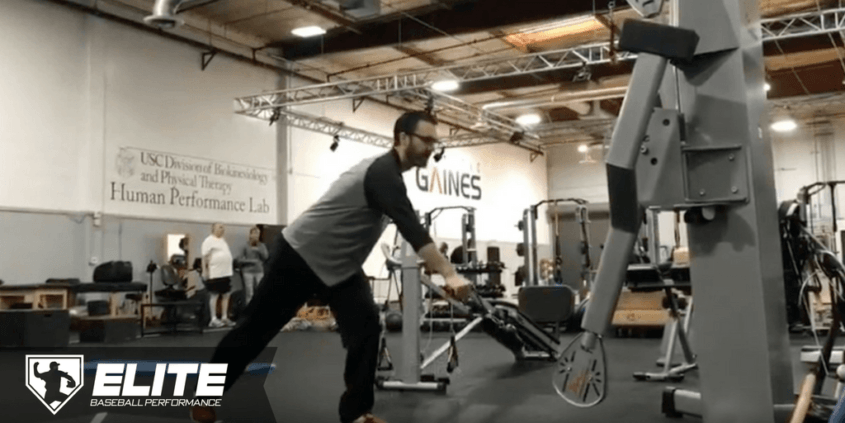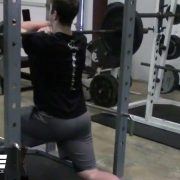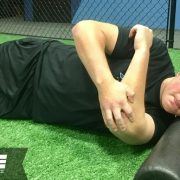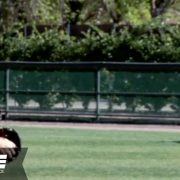Full Body Pitching Deceleration Drills
Building strength, creating mobility and optimizing mechanics can all increase pitching velocity.
Velocity may put the pitcher on the mound, but efficient deceleration will help keep him there and off the treatment table. During the deceleration phase, the primary function of the rotator cuff is to decelerate the extension, adduction and internal rotation of the forward propulsion of the arm.
Pitching is a full body task that takes place in a gravity dependent tri-planar environment. Efficient deceleration includes sequential activation of muscle groups that need to react subconsciously, and since the stride foot hits the ground at late cocking, deceleration needs to start from the ground up as the ball is released form the hand.
The more efficient the pitcher can become at decelerating the forward, rotational, and downward forces of the throwing motion, the more control the pitcher will have of his body as it progresses towards home plate. By training the deceleration phase effectively, less stress will be placed on the posterior shoulder musculature and rotator cuff.
Full Body Pitching Deceleration Drills
In order to get optimal carryover from the gym to the mound, it’s important to train the body and its proprioceptors in the environment and postures, they need to perform in during the task.
Below is a series of full body eccentric deceleration drills that will not only train the posterior shoulder and rotator cuff but also the entire body and its proprioceptors.
Pick up & Reach and Butt Burner
These are high to low, back to front, and right to left movements that mimic the pitching motion. They will help warm up the motor pattern and get the pitcher prepped for more dynamic exercises.
Eccentric Heavy Ball Catch
This is a drill that adds weight to an unweighted phase of throwing. This overload will strengthen the posterior cuff while also loading the scapula, spinal erectors, and stride leg.
Eccentric Med Ball Catch
A similar idea to the Heavy Ball Catch but this uses a heavier med ball and a greater focus is on the trunk, pelvic and hip rotators.
Low Cable Follow-Through
This drill requires less hand-eye coordination and can be performed without a partner. It works similarly to the Heavy Ball but it also allows the athlete to get set up into the ideal foot landing and arm position during the early to late cocking phases.
Pitching Lateral Speed Lunge
A great way to overload the deceleration phase, train agility and provide sport appropriate met-con.
Chris Butler
Latest posts by Chris Butler (see all)
- Full Body Pitching Deceleration Drills - March 21, 2017










Leave a Reply
Want to join the discussion?Feel free to contribute!